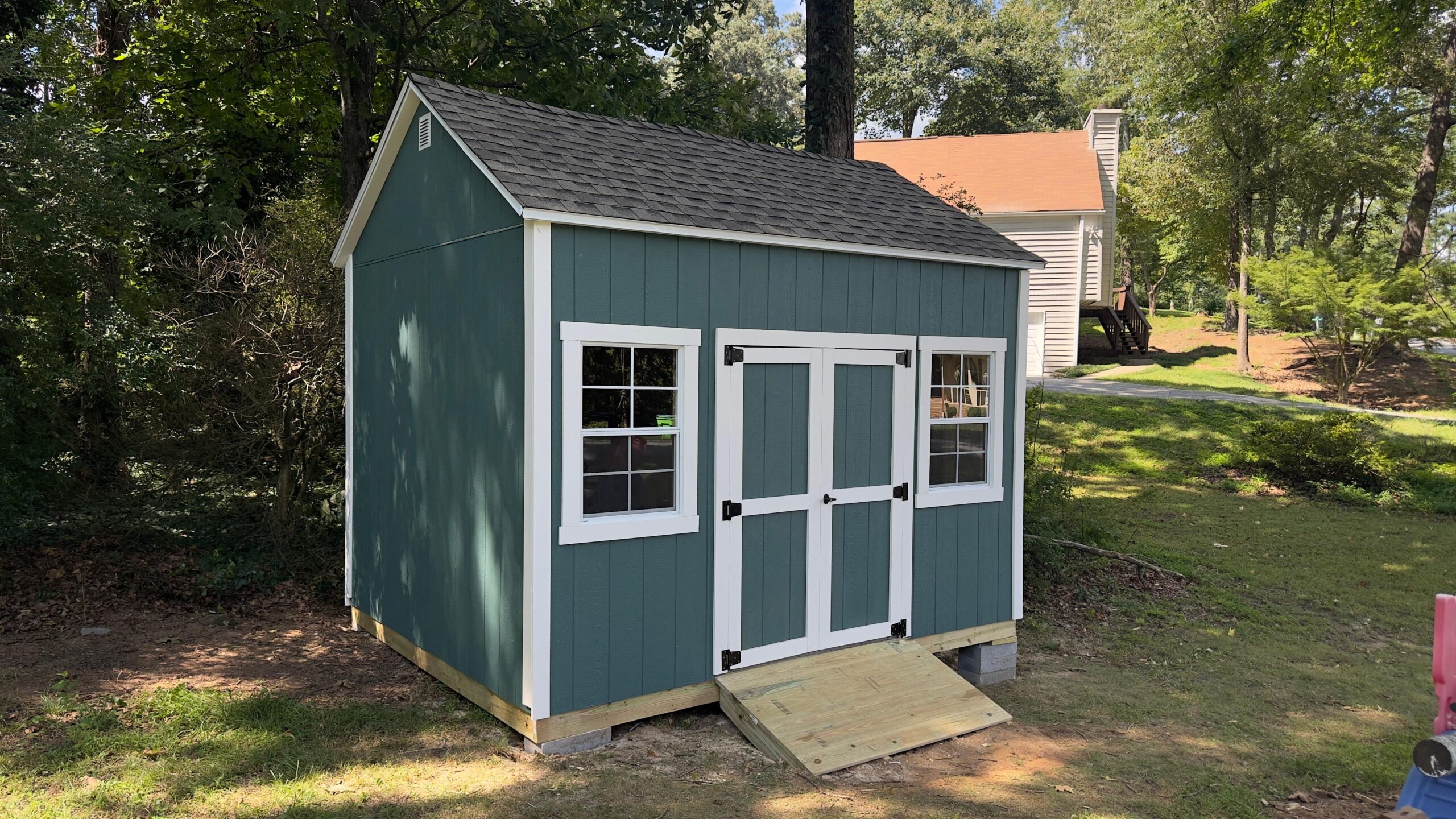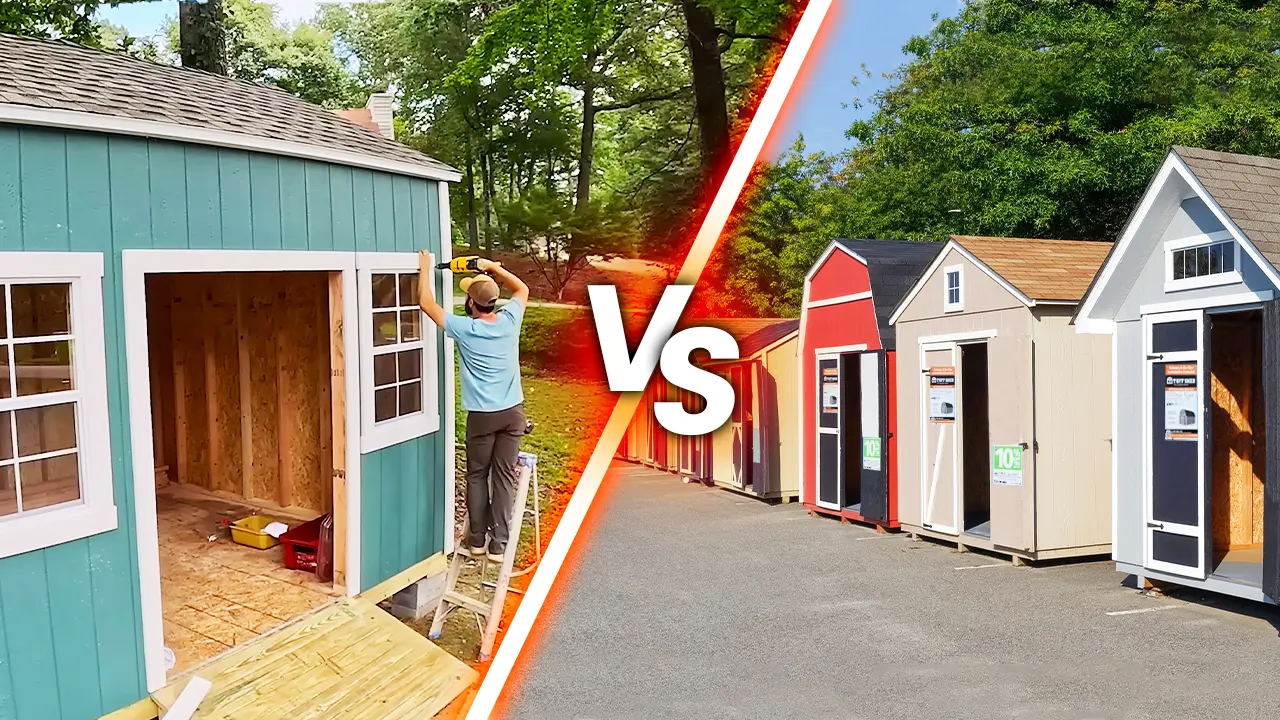Before building a shed, it’s critical to find your yard slope so you can raise and level your shed floor.
Why? Because if your shed isn’t level, you could be dealing with serious structural damage down the road.
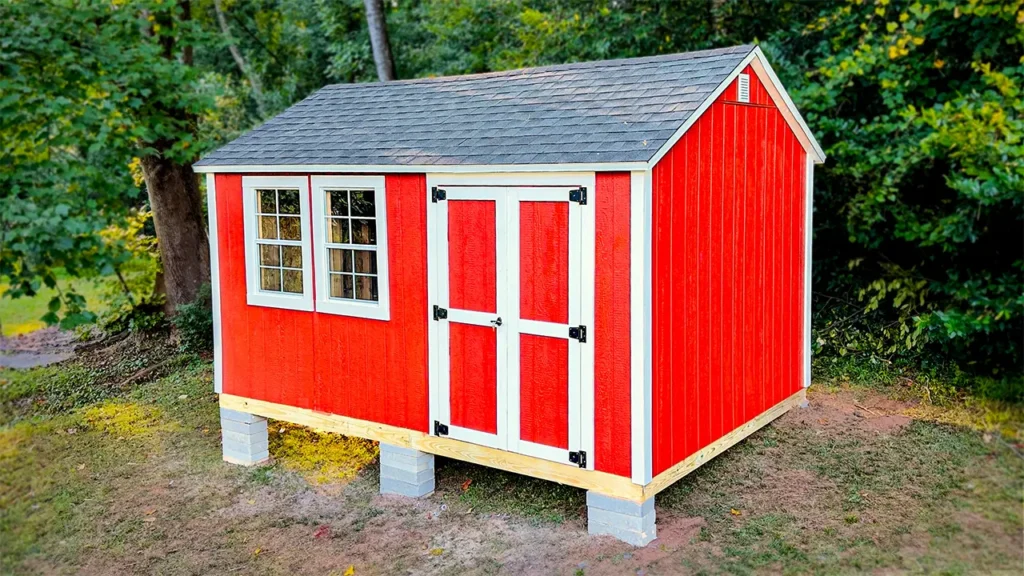
Let’s look at two simple ways to measure yard slope to ensure a level foundation.
Old-School Method
The traditional method is simple, but a little tedious:
- Drive a stake at each end of where your shed will sit.
- Stretch a string line between them.
- Use a bubble level to make sure the string is perfectly level.
- Measure the difference between each side.
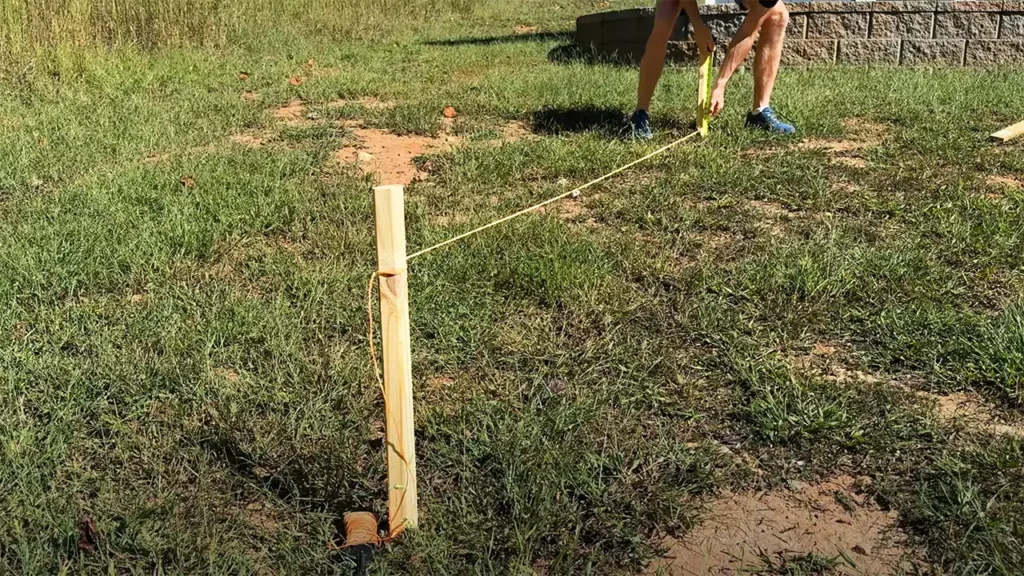
Example: Across a 12-foot run, you might measure 2” on one end and 16” on the other. That means you’ve got a 14” elevation change. You’ll need to build up that low side with blocks or other supports.
This method works, but there’s an even simpler way.
No-Tools Method
You actually don’t need stakes or strings to measure slope—you’ve already got what you need in your pocket.
- Grab a straight edge (a 5–8 foot board works great).
- Open the Measure app on your iphone (might need to download App on Android) and select the Level tool.
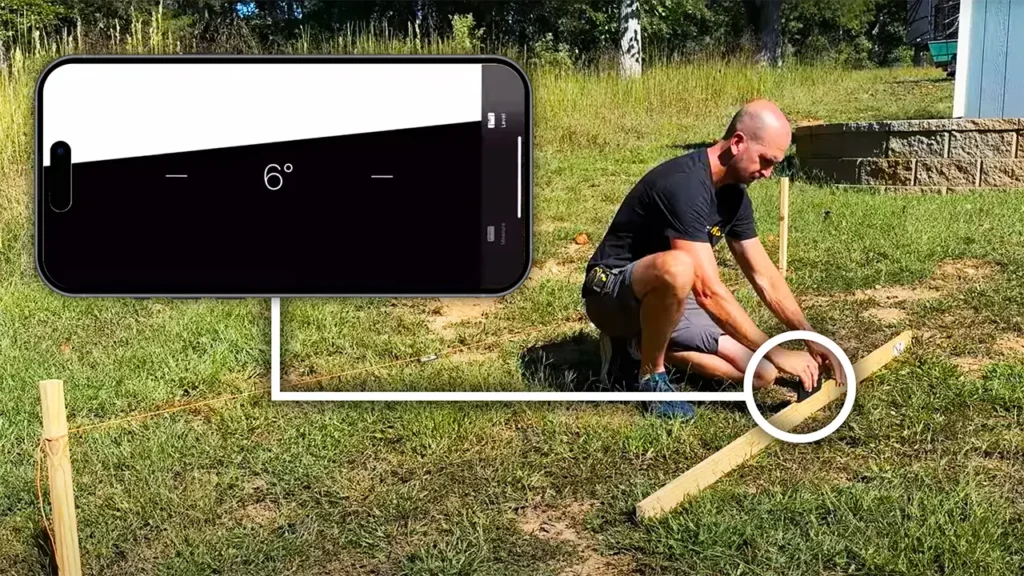
- Set your phone on the board horizontally, and check the reading in degrees.
- Cross-reference your reading with this Free Yard Slope Table.
Example: Let’s say you have a slope of 6° over a 12-foot run. On the chart, you’ll see this equals 15¼ inches of elevation change. In one quick check, you’ll find out how many inches you need to raise one side of your shed.
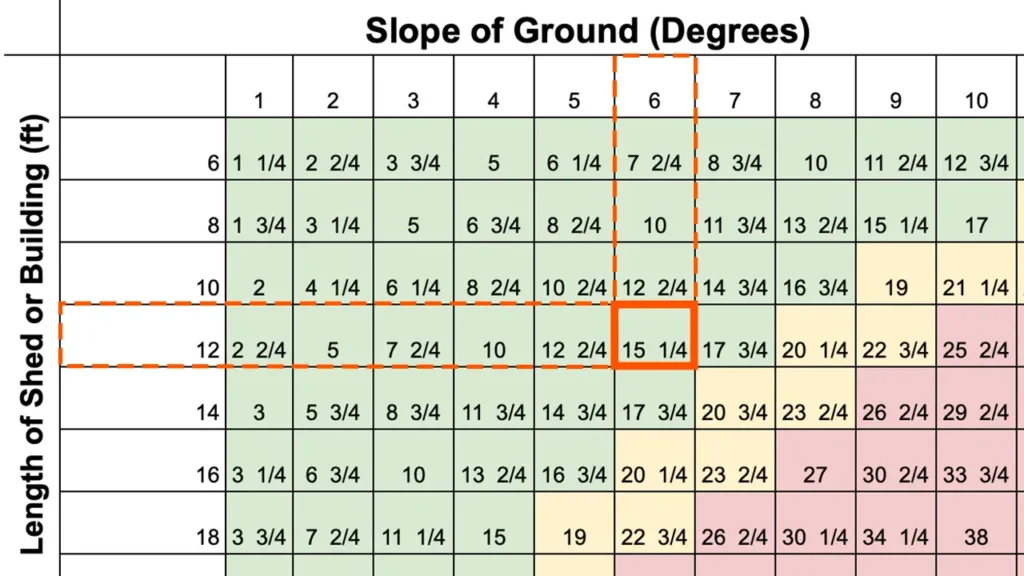
How Accurate Is It?
The phone method gets you within about an inch—close enough for shed planning.
It won’t give decimals, just whole numbers, but that’s plenty for deciding whether you’ll need a couple of blocks or a retaining wall.
When to Stop Stacking Blocks
Concrete blocks (8″x16″x3½”) are the go-to solution for leveling. Stack a few and you’re good, but don’t go overboard.
I’ve color coded the yard slop table showing when it’s ok and NOT ok to build up:
- Green Zone: Up to 18 inches – totally fine.
- Yellow Zone: 18–24 inches – getting risky; not recommended for long term.
- Red Zone: Over 2 feet – don’t even try. You’ll need a permanent solution like a retaining wall.
Final Thoughts
Knowing your slope makes all the difference when building a shed. You can spend 30 minutes with stakes and string, or 30 seconds with your phone. Either way, get it done before you start building.
A level foundation = a shed that lasts.

